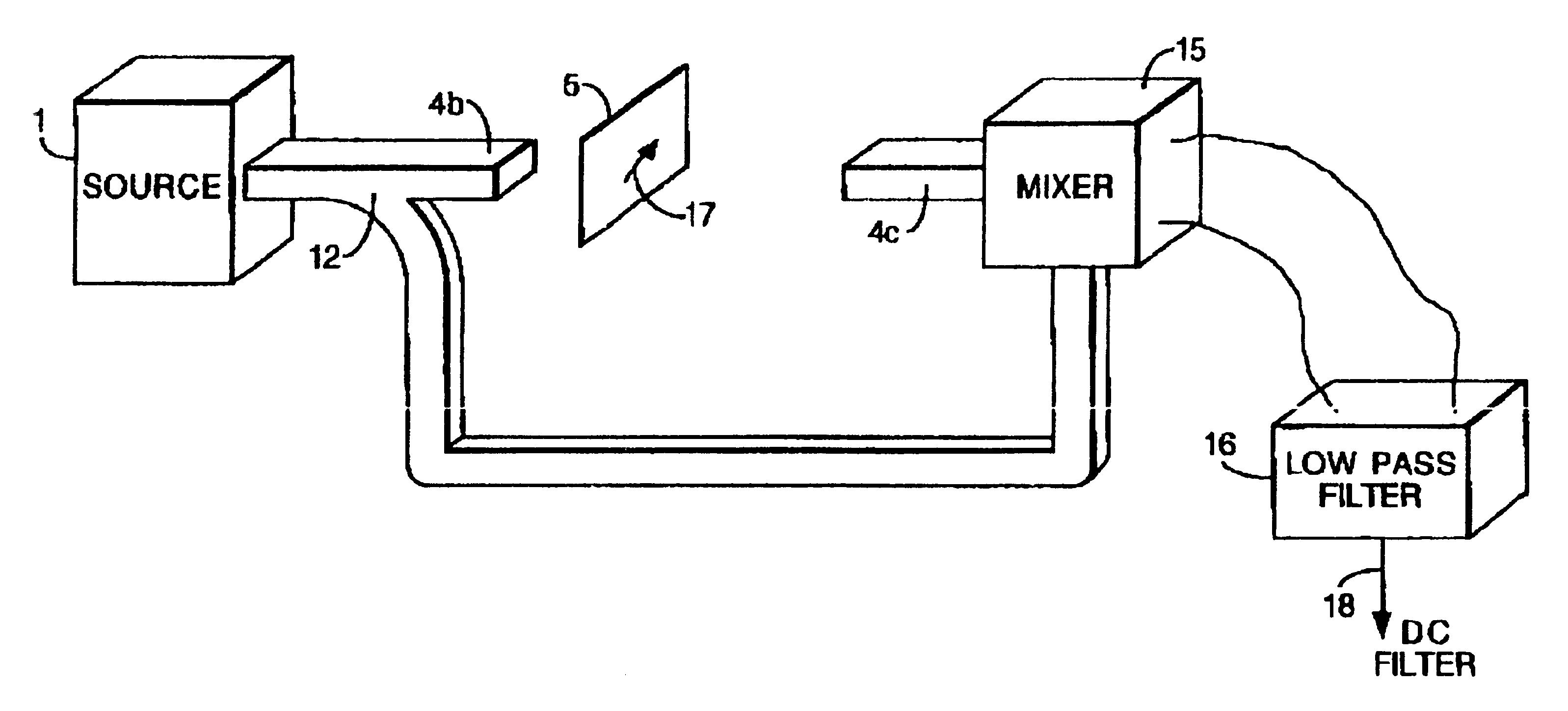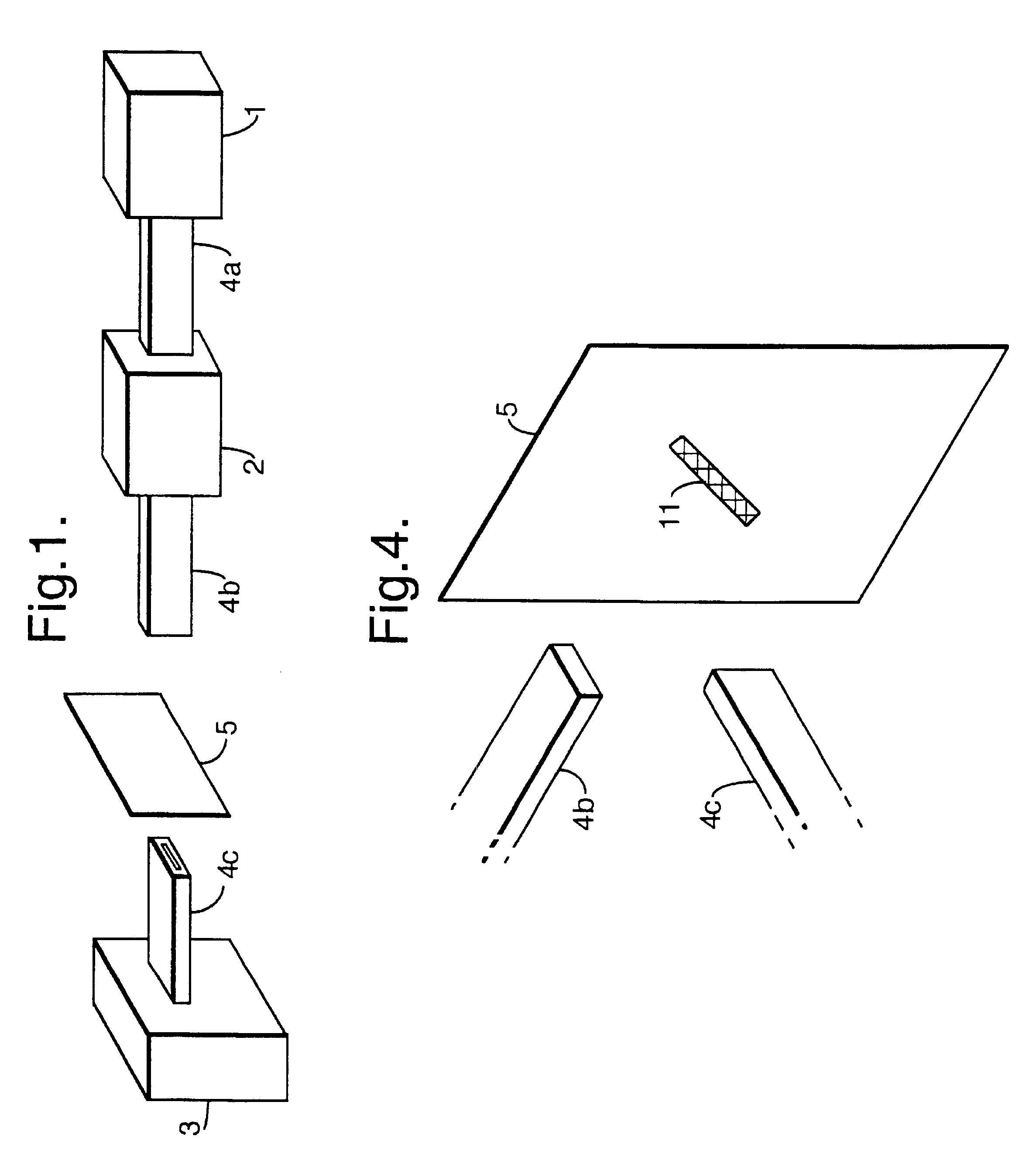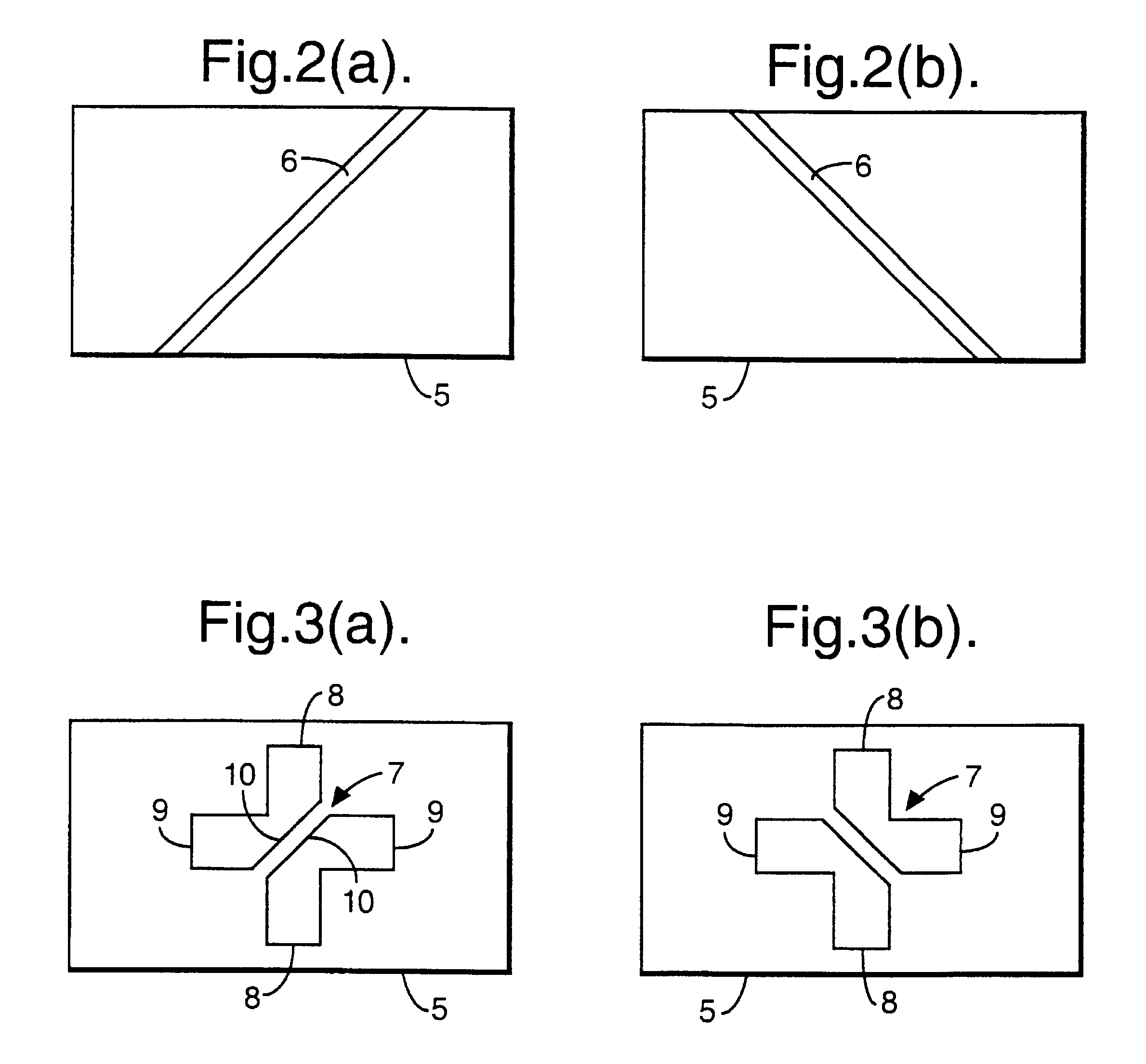Article identification apparatus and method
a technology of apparatus and objects, applied in the field of apparatus and methods for the identification of articles or objects, can solve the problems of inability to identify articles using automated systems, slow readout systems, and obvious presence of objects,
- Summary
- Abstract
- Description
- Claims
- Application Information
AI Technical Summary
Benefits of technology
Problems solved by technology
Method used
Image
Examples
Embodiment Construction
In these examples, the radiation used is substantially plane polarised and the change in polarisation properties caused by marked or tagged objects or articles comprises a change in the plane of polarisation. This, however, should not be seen as limiting as embodiments exploiting other types of non-randomly polarised radiation, such as circularly polarised radiation, may be used.
Referring to FIG. 1, a specific embodiment of the invention includes a microwave source 1 providing microwave radiation, an attenuator 2, a microwave detector 3 and various waveguides 4a, 4b, 4c. The source 1 may be any microwave source which may be coupled to a waveguide 4a. A suitable microwave detector 3 may be any microwave detector which may be coupled to a suitable waveguide.
During operation microwave radiation produced by source 1 passes via waveguide 4a to attenuator 2 which reduces the power to a safer level of about 1 mW. The attenuated radiation is directed, by waveguide antenna 4b, toward an obje...
PUM
 Login to View More
Login to View More Abstract
Description
Claims
Application Information
 Login to View More
Login to View More - R&D
- Intellectual Property
- Life Sciences
- Materials
- Tech Scout
- Unparalleled Data Quality
- Higher Quality Content
- 60% Fewer Hallucinations
Browse by: Latest US Patents, China's latest patents, Technical Efficacy Thesaurus, Application Domain, Technology Topic, Popular Technical Reports.
© 2025 PatSnap. All rights reserved.Legal|Privacy policy|Modern Slavery Act Transparency Statement|Sitemap|About US| Contact US: help@patsnap.com



